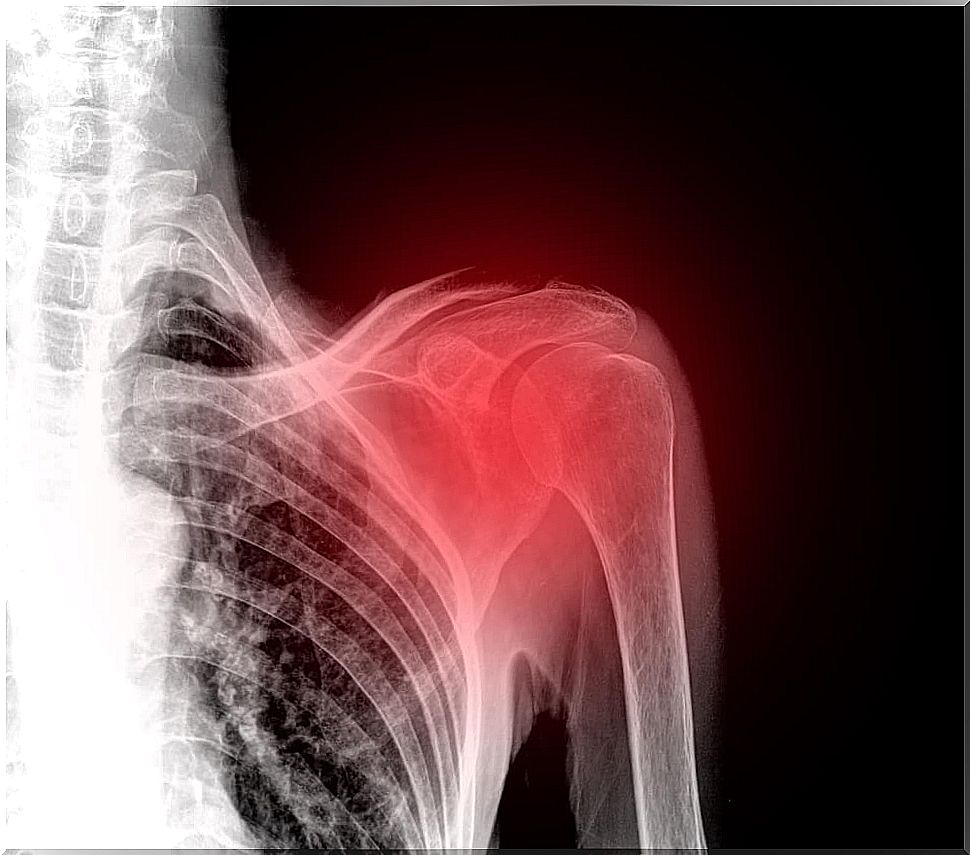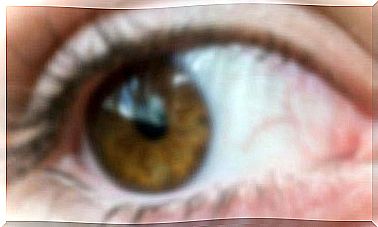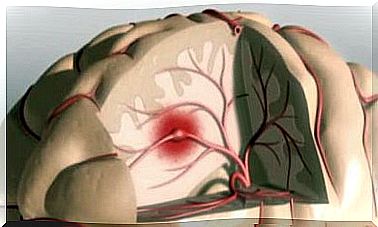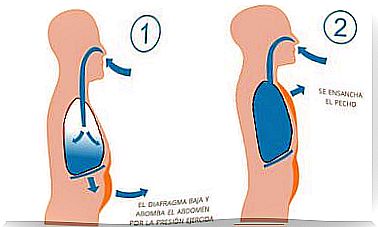Risk Factors And Treatments For Frozen Shoulder
Frozen shoulder is a pathological and traumatic situation of the shoulder joint. It is also known by the name of adhesive capsulitis, because the final mechanism of production of the symptoms is the inflammation of the shoulder capsule.
To understand this, we have to review how the shoulder is constituted. It is a joint where the humerus, clavicle and scapula contact like bones, all surrounded by soft tissue that forms the capsule and surrounds them. That capsule is the one that thickens in the frozen shoulder.
It is estimated that approximately 2% of the world’s population suffers from it at some point in their life. It occurs primarily between the ages of forty and sixty, occurring more in women than in men.
As we will see later, there are people more prone to it than others. It has been mainly associated with lack of mobility leading to thickening of the joint capsule. For that reason, it is usually diagnosed in bedridden patients, for example.
Symptoms and diagnosis of frozen shoulder
Frozen shoulder develops slowly. Symptoms do not appear overnight. It consists of three stages that can last up to four years in total. We describe the process below:
- Motor block: it is the first stage of the pathology and is characterized by pain when moving the shoulder. Although there is still mobility of the joint, the patient is already aware that it is limited. This period can last from two to nine months.
- Freezing: This second stage is also known as the stiffness stage. It becomes very difficult to move the shoulder even for everyday activities. It lasts about six months.
- Thawing: it is a process of improvement of symptoms, either by natural evolution or by the application of medical treatments. Full recovery can take anywhere from six months to two years.
In order to arrive at the diagnosis, the doctor basically must carry out a thorough clinical examination, since the symptoms are clear. It is common for the professional to take the sore upper limb and try to move it in different directions.
When the doctor mobilizes the patient’s shoulder without force, he is measuring the passive range of motion. In turn, he will ask the patient to move the arm according to his own strength to assess active range of motion.
In frozen shoulder, both ranges of motion – passive and active – are limited and painful.

Risk factor’s
Frozen shoulder is associated with situations in which mobility is reduced. By staying prostrate for a long time, for example, you run more risk. It can also happen that there is no complete prostration, but little mobility of the upper limb due to some traumatic cause, and the effect will be the same.
As risk factors for low mobility we have:
- Age: very old people who need third parties to get around.
- Fractures in the arm or forearm: with the consequent placement of a cast.
- Cerebrovascular accident (CVA): the entire recovery period from strokes is slow and with low mobility as a result of the sequelae.
- Postoperative: major surgeries that require prolonged rest.
We also have to consider a group of diseases as a risk factor that, without causing prostration, can be predisposing to frozen shoulder, including:
- Diabetes: Scientific studies have found that up to 20% of people with diabetes suffer from frozen shoulder at some point, although the cause is unknown.
- Thyroid gland disorders: hypothyroidism and hyperthyroidism.
- Parkinson’s disease.

Treatment of frozen shoulder
Most frozen shoulder patients can get better with anti-inflammatory medications and some physical therapy. In general, 90% of those affected do not require corrective surgery.
Among the medications, non-steroidal anti-inflammatory drugs (NSAIDs) or corticosteroids may be prescribed. The most frequently used NSAID is ibuprofen. For corticosteroids, cortisone by injection directly into the painful joint is preferred.
Physiotherapy plays a fundamental role in treatment. There are certain specific exercises and maneuvers that are effective for frozen shoulder. In addition, they are often combined with the application of heat to achieve loosening of rigid structures.
Ultimately, the surgical option is reserved for those patients who have not responded correctly to noninvasive options, such as medication and physical therapy. It is not most of the cases, as we clarify, but the option exists.
There are two surgical maneuvers:
- Manipulation: under anesthesia the medical professional mobilizes the shoulder forcing it, which causes the rigid capsule to break and the joint to be released.
- Arthroscopy: the surgeon cuts some parts of the capsule that is rigid through small incisions with materials prepared for this purpose.
Frozen shoulder: final thoughts
As we have seen, frozen shoulder disease can be disabling and very painful. So if you have similar symptoms with difficulty mobilizing the shoulder and doing the activities of daily living, it is best to consult a doctor to find the correct diagnosis.









